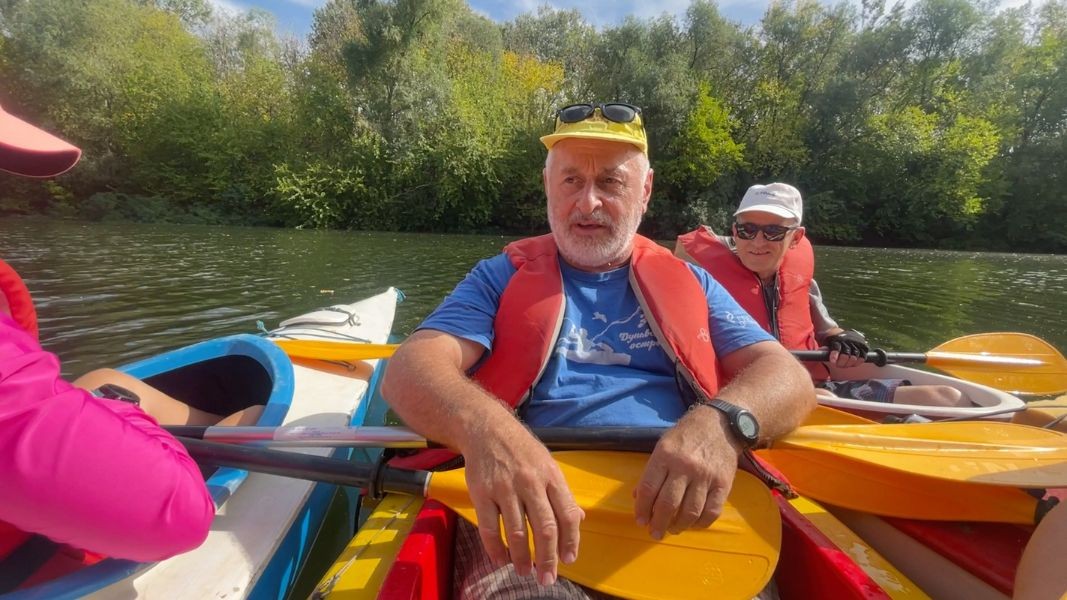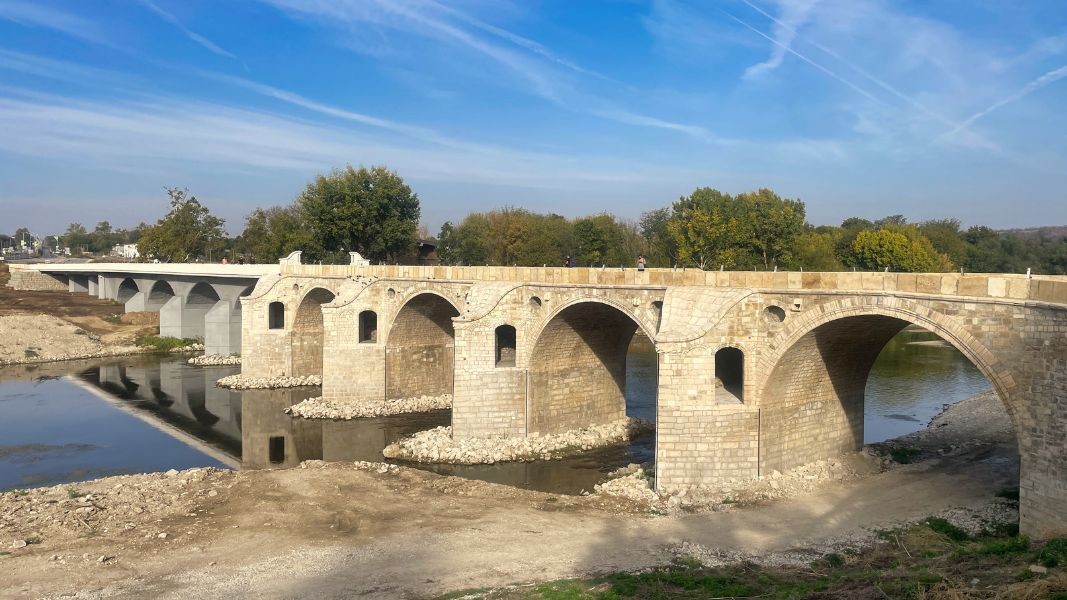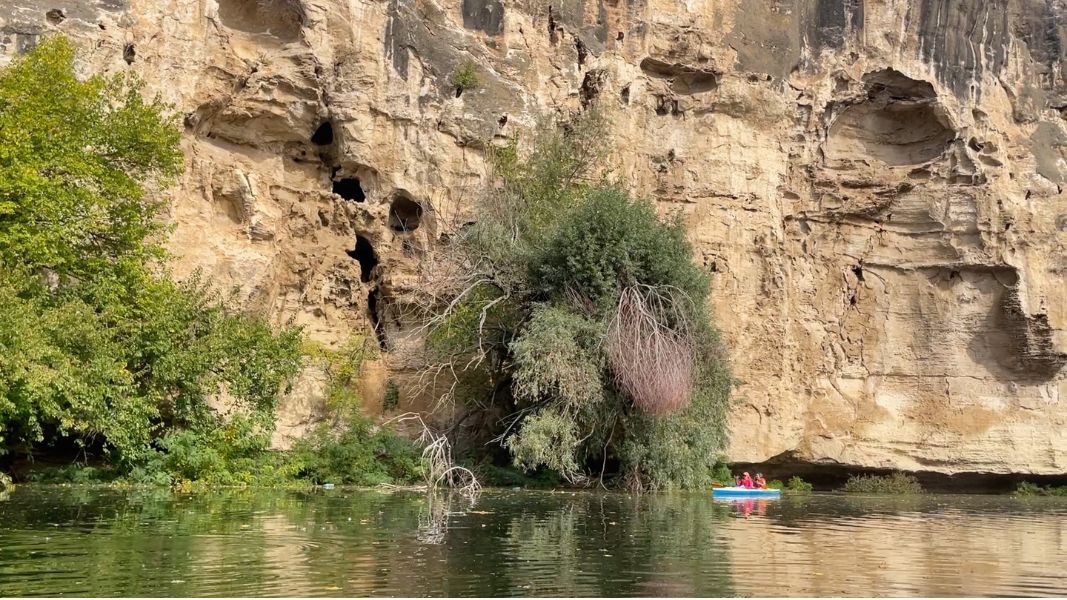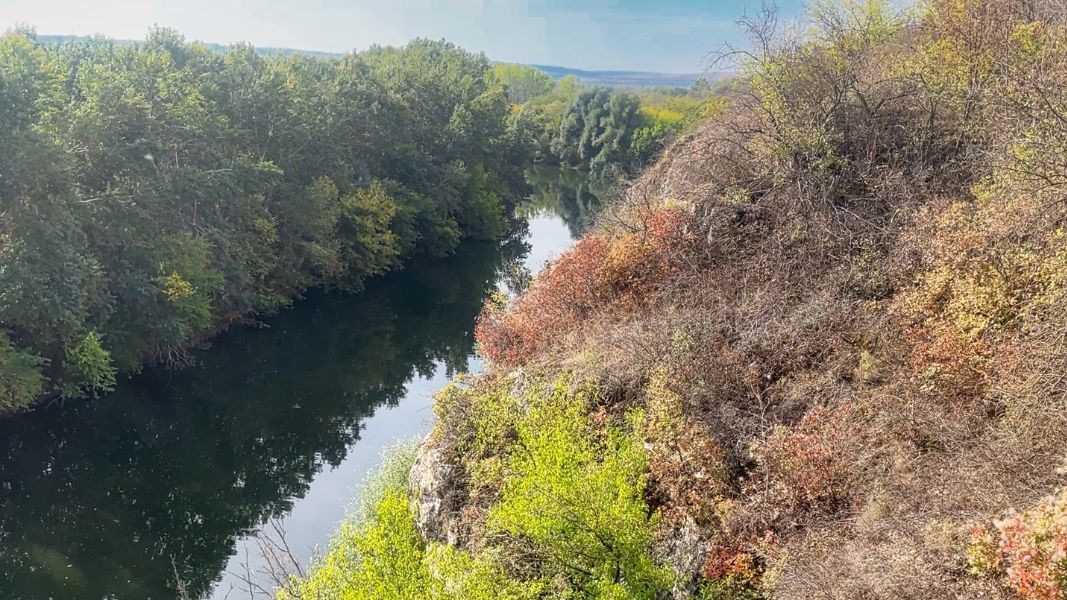The Yantra River rises in the Balkan Mountains at 1,220 metres above sea level and descends northwards, meandering through picturesque valleys and gorges in central northern Bulgaria, crossing the towns of Gabrovo and Veliko Tarnovo. Shortly before it flows into the Danube, in the area of the villages of Belyanovo and Novgrad, like a talented sculptor, the river moulds before our stunned eyes meanders and a deep canyon lined with caves and inaccessible crevices.

"We give short instructions and people get in the boats and go. The river is good, cozy. It envelops people with its atmosphere and they feel part of the landscape, of all this abundance... There are trees on both sides and you're like in a green tunnel. You find yourself into an isolated world with many birds and animals and you sink inside nature. There may be settlements around, roads, but they remain out of sight, out of our hearing. And we move only along this green street called Yantra."

"Interestingly, in this part of the Yantra River there are high cliffs on one bank, reaching up to 40-50 m. And this rock wall is "embedded" directly into the water below", says Sasho Popov. "These rocks are limestone, they have been eroded by the water. They have an interesting structure with caves, with niches... And in some of them hermit monks in the Middle Ages carved rock cells. There were rock churches, rock monasteries. They are difficult to access, you need mountaineering equipment to penetrate them. But near the village of Belyanovo you can see a rock church from the 12th century, which has been improved for tourism purposes."

"And it becomes a combination - we have sport and tourism activity related to rowing. We have beautiful landscapes like in the paintings of the impressionists, of Claude Monet. We have history - the monastic cloisters in the cliffs. We have ornithology, because this green curtain on both sides of the river attracts many waterfowl - grey heron, cormorants, mallards. I've also seen storks, osprey, etc. There are legends of huge fish living in the underwater cavities here. Right where the rock reaches the water there are underwater niches where huge catfish used to hide and fishermen, when they catch a catfish, tell stories for years," says Sasho Popov in conclusion.

Explore more parts of Bulgaria with the same author:
English publication: Rositsa Petkova
Bulgaria has a unique tourism potential and we are here to present it in the best way. This was stated by the Minister of Tourism Miroslav Borshosh regarding the country's participation in the largest international tourism exhibition in the world,..
Bulgaria will participate in the 2025 Osaka World Expo with a national pavilion, where Bulgarian students will work, as proposed by the Ministry of Tourism. Bulgaria will have its own pavilion of the highest class – type "A", said the..
In winter, the well-known Bulgarian town of Kotel known for its National Revival Period architecture attracts tourists with cultural routes, frosty landscapes and the opportunity to ski in the folds of the Balkan Mountains. About 4 km from the center of..
Travelers planning a spring escape might want to consider Sofia, which has been named the top European capital for a road trip getaway this season,..
The only Museum of Glass in Bulgaria is in Beloslav, a small town on one of the arms of Varna Lake. It was here, in 1893, that the Mushalan brothers..

+359 2 9336 661
